How To Draw Light Inspired Anime Clothes
This tutorial explains how to shade an anime or manga style face to show unlike lighting weather.
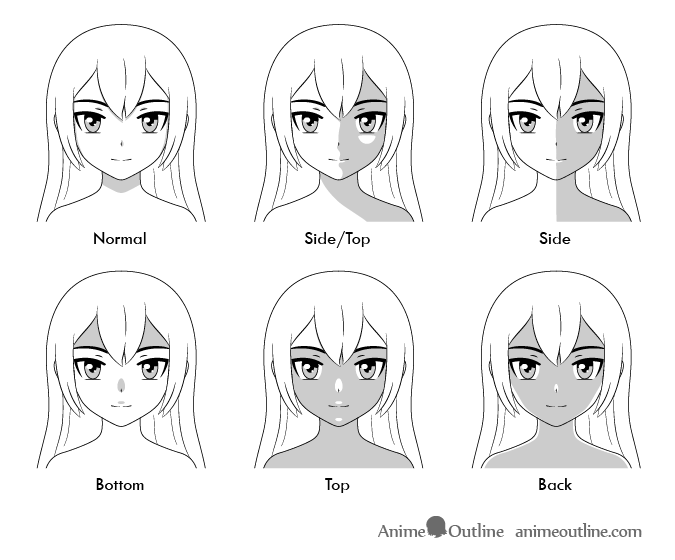
Anime and manga generally use a technique known as "Cel" shading which is shading without gradients. Cel shading is generally much faster and easier to apply to a drawing than realistic shading which makes information technology bang-up for shading quickly shading multiple frames of an animation or many panels of manga.
General Lighting Anime Confront Shading
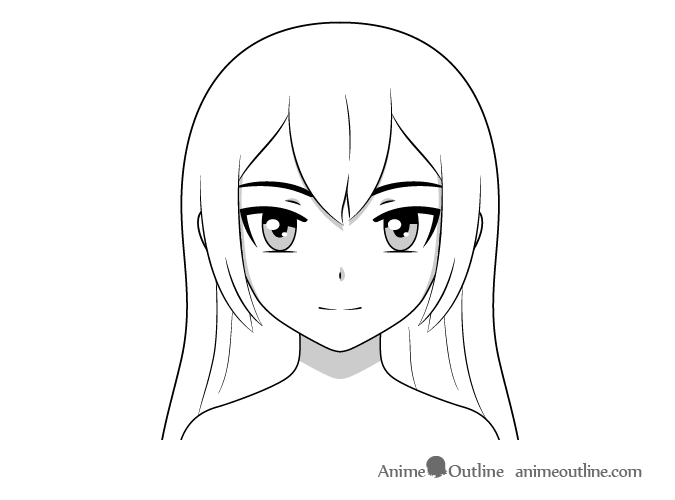
This shading selection is usually suitable to about common lighting conditions where there is no particularly potent ane directional light source.
In this type of full general lighting the shadows will unremarkably be drawn as follows:
- Brow – shadows bandage by the hair
- Eyelids – tiny shadows as these areas are indented in the head
- Nose – modest shadow to one side
- Neck – a large shadow cast past the head
Side/Top Lit Anime Face up Shading
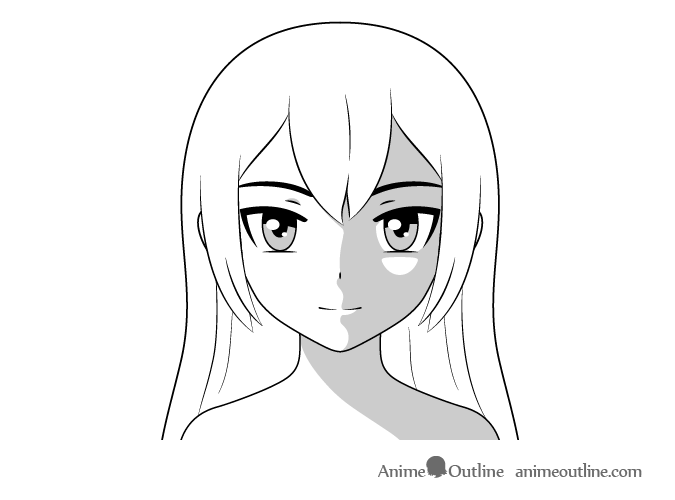
When the light is coming from above and to i side of the grapheme the shadows will be cast on an angle. I side of the face volition more often than not exist calorie-free and one will be dark. On the nighttime side in that location will by and large be a lite spot around the cheek bone as that area will catch some calorie-free. On the light side there will be a tiny shadow around the eyelid.
The shadow on the cervix volition be angled opposite of the low-cal source.
Side Lit Anime Face Shading
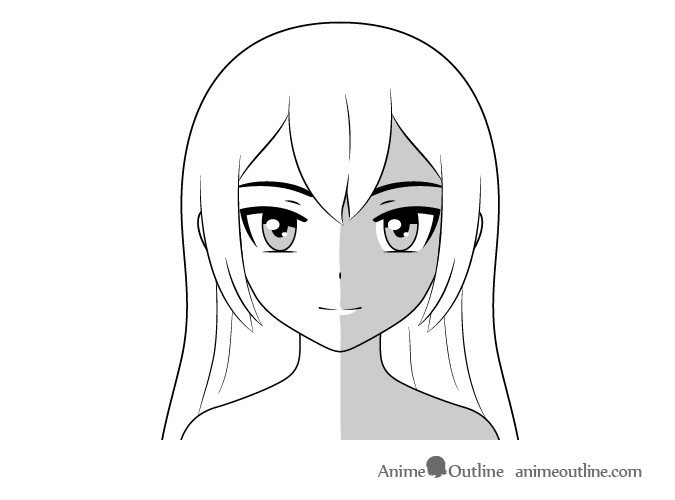
When the light is coming straight from one side you will pretty much have an evenly carve up (down the middle) light and a dark side of the face up.
Bottom Lit Anime Confront Shading
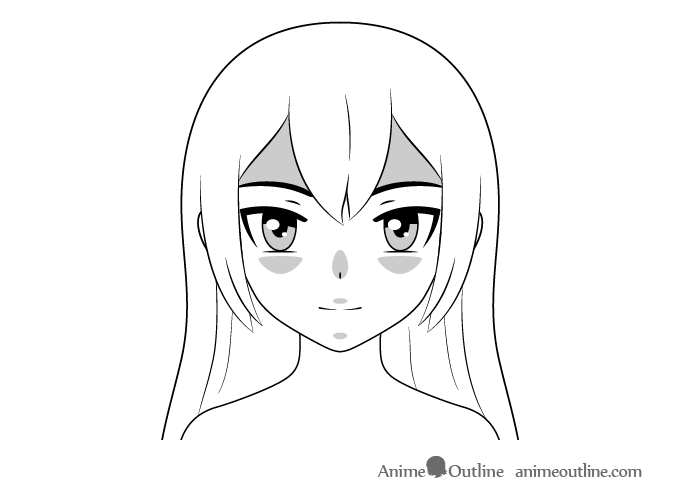
When the light is coming from the lesser pretty much the entire face volition be lit up with the shadows being cast equally follows:
- Chin – a small shaded area at the top of the chin equally the mentum usually tends to stick out a bit and that crash-land volition cast a tiny shadow
- Upper Lip – the upper lip will bandage a very small shadow equally it sticks out just a little scrap blocking some of the calorie-free
- Nose – upper area equally the nose will block some of the light going up casting a shadow
- Cheeks – as the cheekbones too tend to stick out a little they will create some shadows
- Forehead – will pretty much be entirely dark equally it curves away from the bottom light source
Top Lit Anime Face up Shading
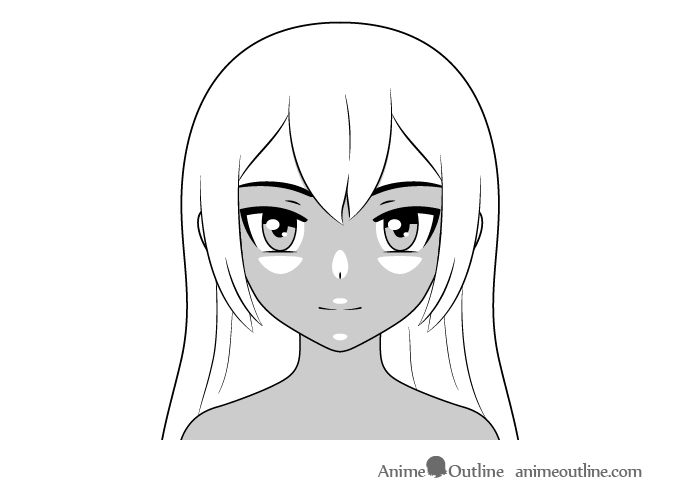
Superlative lighting will basically exist the reverse of the bottom lighting described above. Almost of the face volition exist shaded with the lighter areas beingness placed equally follows:
- Forehead – volition be completely lit upwardly as it curves towards the to a higher place light source
- Olfactory organ – the upper side every bit it faces towards the light
- Cheeks – the upper area of the cheekbones
- Upper Lip – as it sticks out merely a niggling bit and will catch some of the light
- Chin – upper area of chin as the chin curves a little bit outwards from the face
Back Lit Anime Face Shading
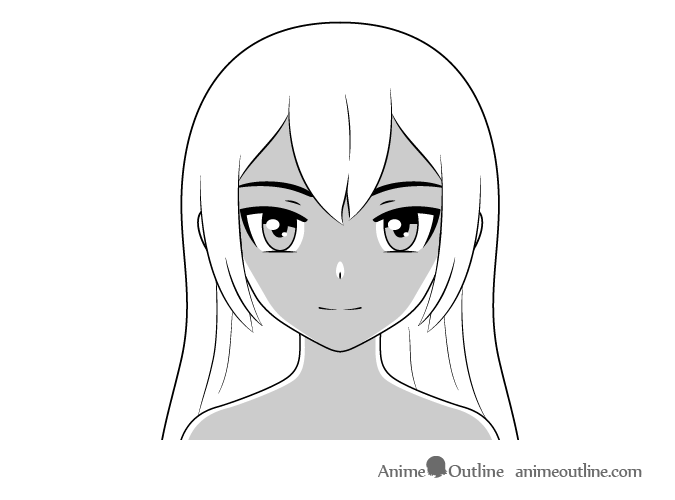
Back lighting will pretty much create a sort of "outline" of light around the character. Most of the light will be on the cheeks and sides of neck.
On a real face there volition likewise be some light on each side of the nose but for an anime nose you can but do one small light spot on the tip.
Conclusion
While Cel shading is fairly easy to apply every bit long as you accept a full general agreement of where to identify the shadows. Hopefully this tutorial helped you proceeds a amend agreement of how to shade an anime or manga mode face up in different lighting.
If you liked this tutorial you lot tin can also check out:
Beginner Guide to Picking Colors When Drawing Anime & Manga
Source: https://www.animeoutline.com/how-to-shade-an-anime-face-in-different-lighting/
Posted by: wilsonsperoar86.blogspot.com

0 Response to "How To Draw Light Inspired Anime Clothes"
Post a Comment